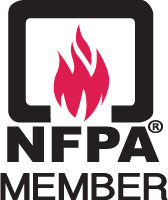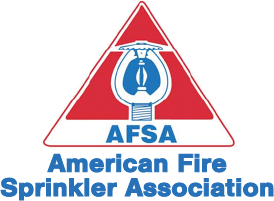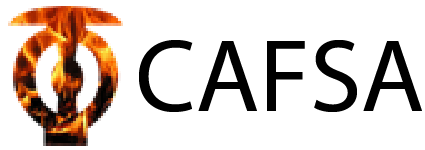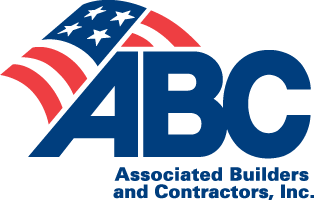Frequently Asked Questions
Burning questions? We have answers.
Q: How effective are fire sprinklers?
A: The National Fire Protection Association (NFPA) has no record of a fire killing more than two people in a completely sprinklered public assembly, educational, institutional or residential building where the system was working properly. In cases in which fatalities occur in a building equipped with fire sprinklers, the deceased are almost always in intimate contact with the fire and were burned severely before the sprinkler activated (i.e., smoking in bed, explosions, etc.). Sprinklers reduce chances of dying in a fire and the average property loss by one-half to two-thirds in any kind of property where they are used.
Q: How long have fire sprinklers been in existence?
A: Automatic fire sprinklers have been in use since 1874.
Q: Do any studies exist that document the effectiveness of fire sprinklers?
A: “U.S. Experience with Sprinklers” (September 2001) by Kimberly Rohr provides an excellent study of the use and experience of automatic fire sprinklers. This report was produced by and is available from the National Fire Protection Association. (see: www.nfpa.org/Research/nfpafactsheets/sprinkler/sprinkler.asp)
Q: Are fire sprinklers prone to accidental discharge?
A: The odds of sprinkler activation due to a manufacturing defect are about 1 in 16 million. Fire sprinklers have a long history of proven dependability and reliability. Although sprinklers can be damaged and activated through intentional or accidental abuse, this is rare. Sprinkler piping is no more likely to leak than existing plumbing piping in every home and building.
Q: Does fire sprinkler activation result in a lot of water damage?
A: No, fire sprinklers are designed to control a fire in its early stages where less water is required. Most fires are completely controlled with the activation of only one or two sprinklers. Fire hoses, on average, use more than 8 times the water that sprinklers do to contain a fire.
Q: How much does a fire sprinkler system cost?
A: The cost per square foot can vary widely due to great differences in installation requirements so this question can be answered effectively only after a review of the occupancy. A system installed in a warm-climate area with ample water supply and good water pressure will cost much less than a system installed in a cold-climate area with poor water pressure or an undependable/inadequate water supply. New installations will cost much less than retrofit installations.
Q: How many sprinklers are installed each year?
A: For the past five years, domestic sprinkler shipments have averaged about 38 million sprinklers per year.
Q: Why are fire sprinklers required in some areas, and not in others? Why are there variations in sprinkler requirements?
A: Fire sprinkler systems are installed in accordance with consensus standards developed through the National Fire Protection Association (NFPA). These standards are very specific in defining how sprinklers are to be installed in different types of occupancies and different hazard classifications. The standards adopted by NFPA represent the best-recommended practices, but the standards by themselves are not “law.” Development of the consensus is a dynamic process and the standard is changed to reflect new technologies, science, and experience. Every three years a new version of the standard is issued that contains changes and updates. The requirements for the installation of fire sprinklers are adopted as law by state or local jurisdictions as a part of their building code or local ordinance. At times jurisdictions may vary some of the requirements contained in the NFPA documents. Differences in requirements will vary from city to city based on local changes made to the NFPA standards, or the year of the standard adopted by the local jurisdiction. AEGIS has its own design and layout department that stays current with all local jurisdictions and NFPA requirements.
Q: Aren’t fire sprinklers required in all high-rise offices, public assemblies, and hotels/motels?
A: No, they are not always required. Many buildings were built prior to modern-day standards and were “grandfathered” so a retrofit was not required. Some local jurisdictions have seen the many advantages of fire sprinklers and required buildings to be retrofitted over a period of years.
Q: Are there any federal laws that require automatic fire sprinklers?
A: The Hotel and Motel Fire Safety Act of 1990 (PL101-391) was passed into law by Congress to save lives and protect property by promoting fire and life safety in hotels, motels and other places of public accommodation. The law mandates that federal employees on travel must stay in public accommodations that adhere to the life-safety requirements in the legislation guidelines. PL101-391 also states that federally funded meetings and conferences cannot be held in properties that do not comply with the law. PL101-391 is applicable to all places of public accommodation, and requires that such properties are equipped with hard-wired, single-station smoke detectors in each guest room and an automatic sprinkler system, with a sprinkler head in each guest room. Properties three stories or lower in height are exempt from the sprinkler requirement. US Fire Administration has been charged with carrying out FEMA’s responsibilities with respect to the Hotel and Motel Fire Safety Act of 1990. In addition to compiling, maintaining and publishing the National Master List, USFA is also responsible for taking steps to encourage states to promote the use of automatic sprinkler systems and automatic smoke detection systems. The USFA list of hotels and motels meeting the requirements can be viewed at: www.usfa.fema.gov/applications/hotel/





